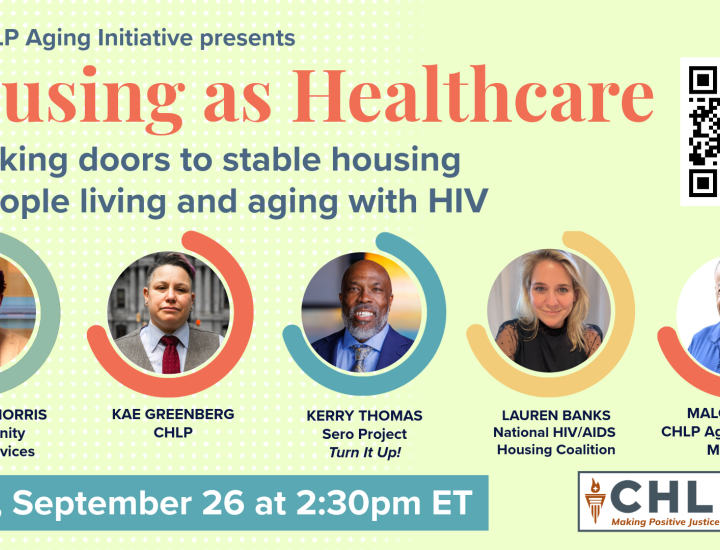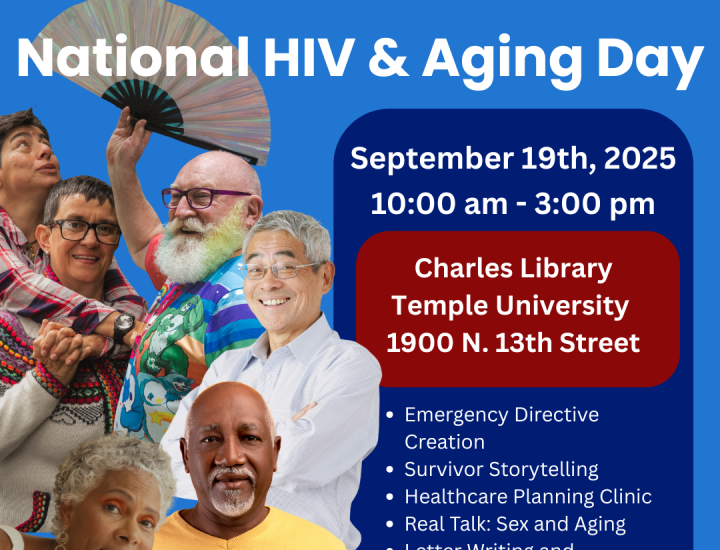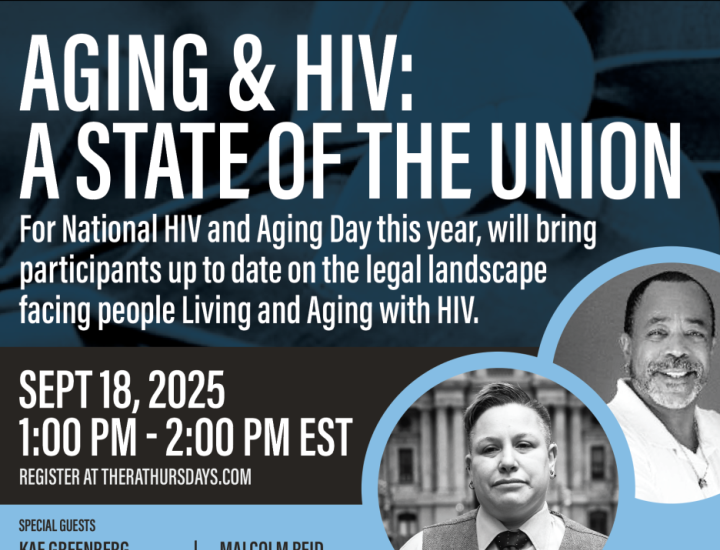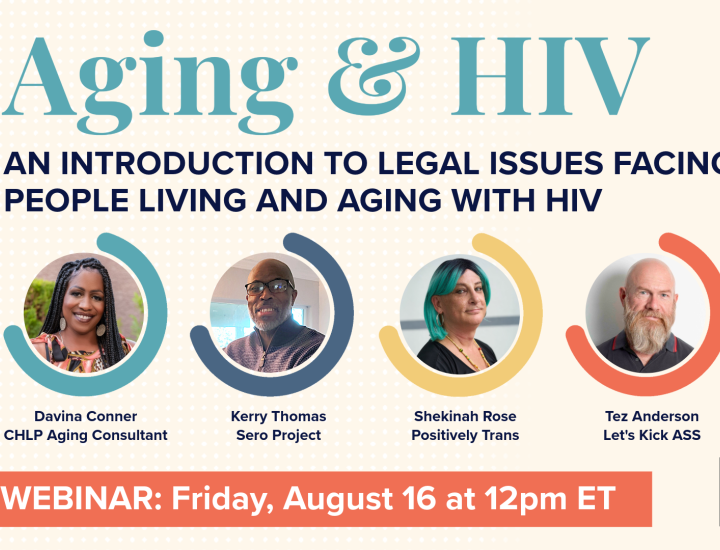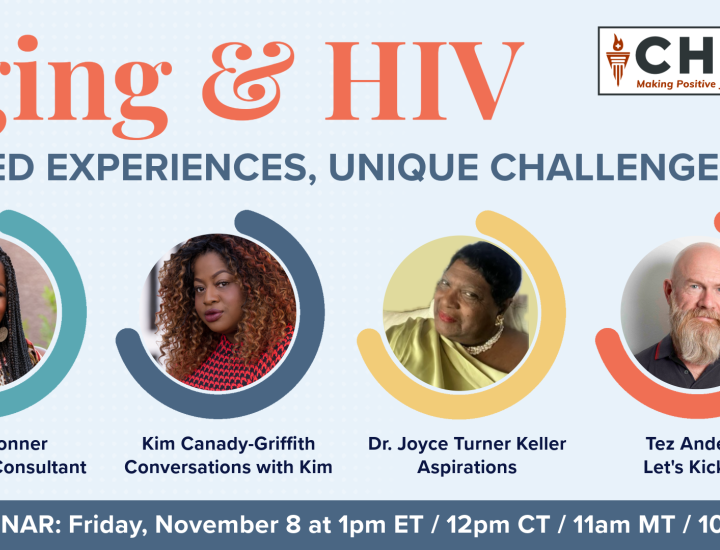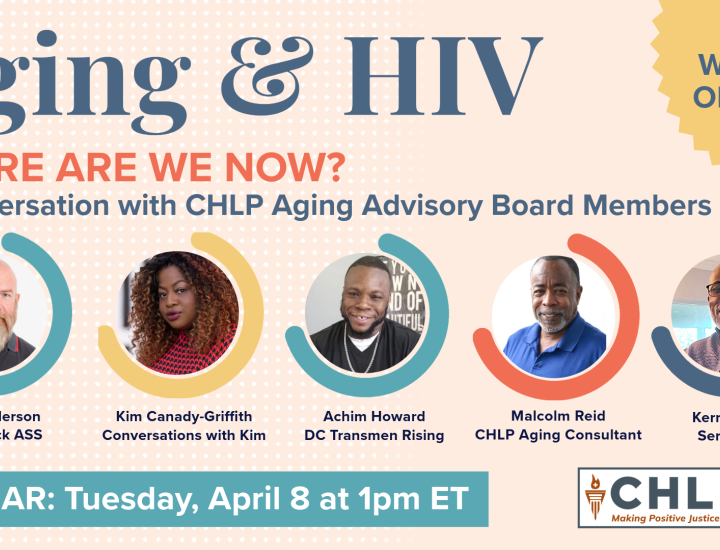Aging Initiative
CHLP’s Aging Initiative originated in 2022 to respond to the unique issues faced by people living and aging with HIV, which includes both long-term and lifetime survivors. Through this effort, we engage in thoughtful policy analysis and legal research to create resources to educate people living and aging with HIV on steps they can take to address the challenges facing them.
Our intersectional, cross-sector work is centered on two underserved groups within the community of people living and aging with HIV: those who have a criminal record and those who are transgender and/or non-binary. We work to identify and advocate for important policy changes that will benefit and empower these communities.
By 2030, 70% of people living with HIV in many areas will be over 50
Trans and non-binary people and Black and brown and LGBTQ+ communities in the South are the most vulnerable to acquiring HIV. Because they are more likely to be targeted by criminalization and incarceration, they are also more likely to have criminal records.
The Aging Advisory Council
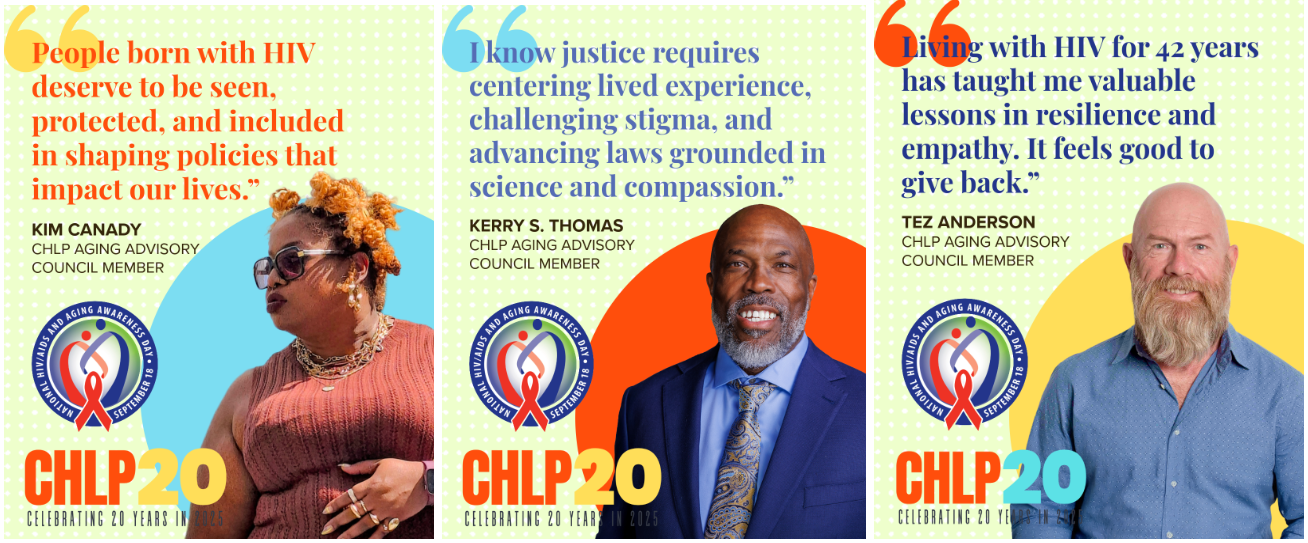
The CHLP Aging Advisory Council consists of seven long-term or lifetime survivors of HIV who provide expert guidance and work with CHLP as advisors on issues that directly impact them. Our work is driven and informed through consultation with council members, discussions with organizational partners, and the input and advice of the larger community of people living and aging with HIV.
Aging & HIV: A Primer
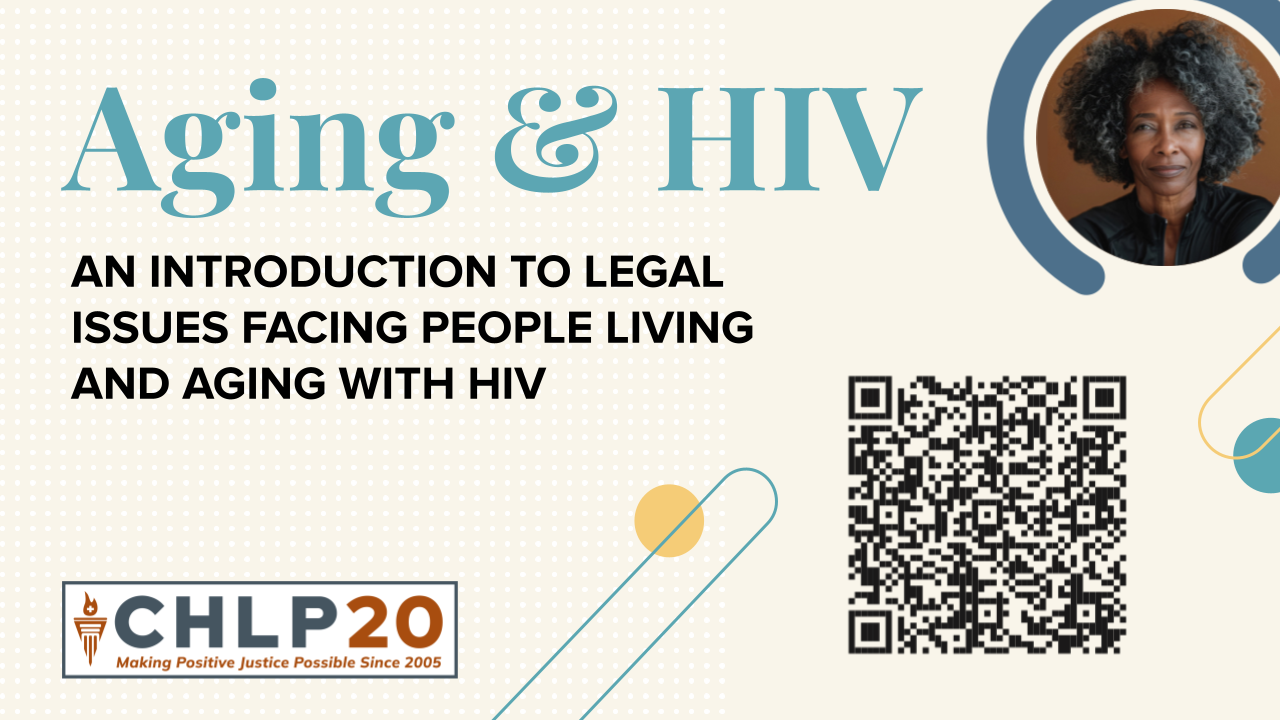
CHLP's Aging & HIV legal primer explores the unique issues facing the rapidly expanding population of older people living with HIV. The focus of the primer is to help people living and aging with HIV identify and overcome the legal barriers to aging with dignity. It explains existing support systems and serves as a guide for advocates to identify priority areas for policy work.

